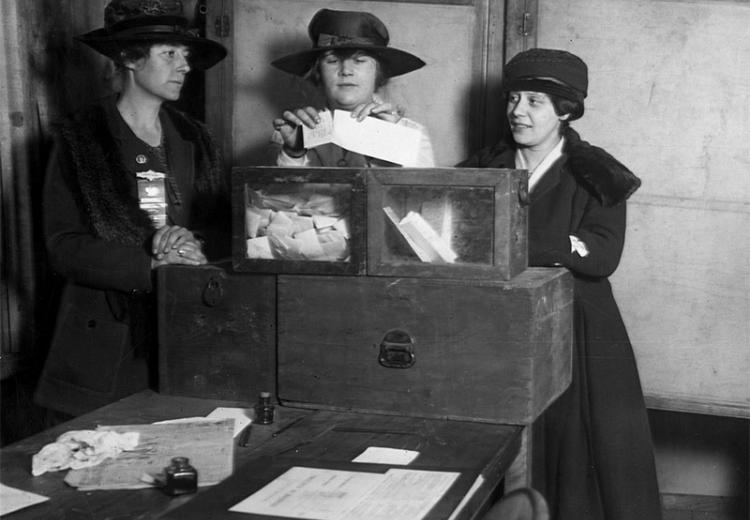Voting Rights for Women: Pro- and Anti-Suffrage

Three suffragists casting votes in New York City, 1917.
An article originally published in the 1991 Session Weekly of the Minnesota House of Representatives recalls the arguments put forth in objection to the Minnesota Equal Suffrage Association's decision, early in the 20th century, to push for the right of women to vote in presidential elections. One lawmaker declared that all-male voting was "designed by our forefathers." Later, Rep. Thomas Girling argued that "women shouldn't be dragged into the dirty pool of politics." Approving such a measure, he said, would "cause irreparable damage at great expense to the state."
When the Senate took up the bill, one member asserted that "disaster and ruin would overtake the nation." Suffrage would lead inevitably to "government by females" because "men could never resist the blandishments of women." Instead, he recommended that women "attach themselves to some man who will represent them in public affairs."
Though such arguments may now sound rather ridiculous to some, they are closely related to entrenched views of women that took more than a century to overcome (assuming one agrees they have been overcome). Understanding the positions of the suffrage and anti-suffrage movements—as expressed in archival broadsides, speeches, pamphlets, and political cartoons—will help your students better appreciate the struggle for women's rights and the vestiges of the anti-suffrage positions that lasted at least through the 1960s and, perhaps, to the present day.
Note: This lesson may be taught either as a stand-alone lesson or as a companion to the complementary EDSITEment lessons Women's Suffrage: Why the West First, Who were the Foremothers of Women's Equality?, and Women's Equality: Changing Attitudes and Beliefs.
Guiding Questions
What role did American culture and gender norms play in the fight for voting rights?
What were the arguments for and against suffrage?
How did women eventually earn voting rights?
Learning Objectives
Analyze the arguments for and against suffrage for women in the 19th and early 20th centuries.
Analyze how women and suffragette supporters organized and communicated in public.
Analyze primary sources to construct a position in response to a compelling question.
Evaluate the short and long term ramifications of the process undertaken to give women the right to vote.
